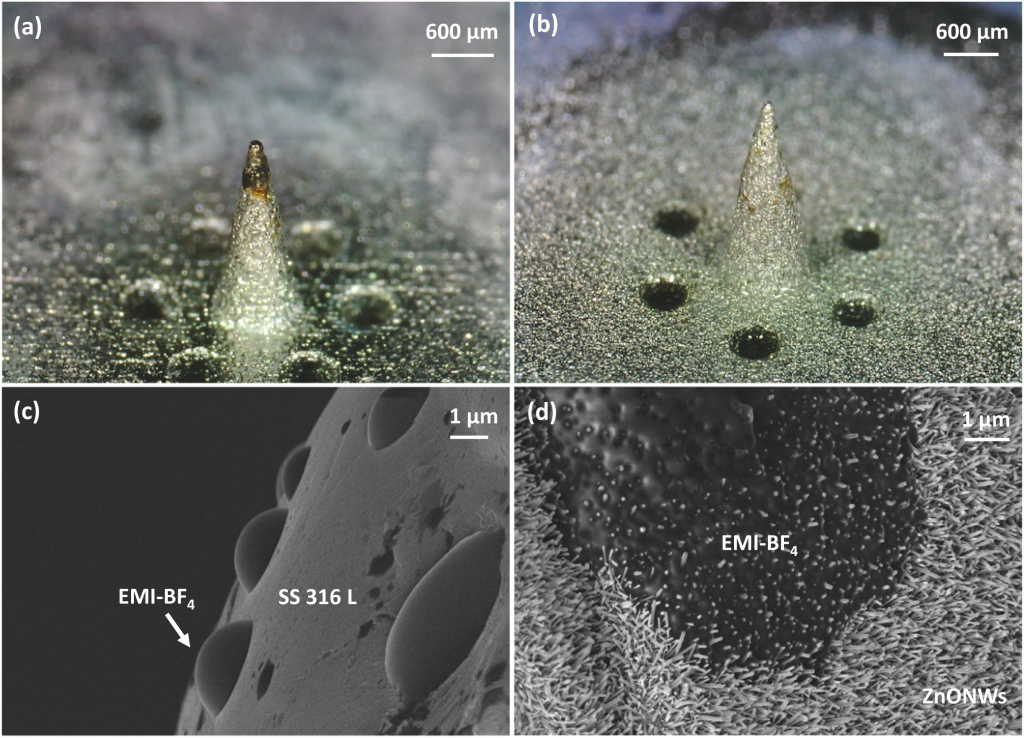Researchers from the Massachusetts Institute of Technology (MIT) have designed and tested a novel 3D printed ion-emitting satellite propulsion system.
The tiny thruster, which is believed to be the first fully-printed device of its kind, fires charged ionic particles from emitter cones along its outer shell, to give it a few micronewtons of propulsion. Within the frictionless environment of space, this power could prove sufficient to make it a low-cost and efficient alternative to conventional CubeSat engines.
“If you want to be serious about developing high-performance hardware for space, you really need to look into optimizing the shapes, the materials, everything that composes these systems,” said the project’s lead researcher Luis Fernando Velásquez-García. “3D printing can help with all of these things.”
“The hardware that you put into space, you want to get many, many years of use out of that, so this is a good strategy to do it efficiently.”

The benefits of ionic propulsion
While launching a payload into space requires the use of huge chemical-powered rockets, once they’re actually in orbit, the thrust required to maneuver them is comparatively small. Consequently, electrospray thrusters, which emit high-speed streams of particles to provide thrust, represent an attractive option for use in ‘ride-share’ satellite missions.
Electrospray engines are particularly effective within such applications, as they’re able to fire either positively or negatively-charged particles, simply by changing their polarity. What’s more, their layout is well-suited to miniaturization and removes the need for a neutralizer, making them more reliable and fuel-efficient than conventional designs.
However, although a number of liquid-powered systems have been built in recent years, they’ve often been created via costly, time-consuming subtractive methods. Using 3D printing, the scientists claim that it’s now possible to “democratize” the tech, shorten the design process and produce small-to-medium sized batches.
“Since there has been great progress in 3D printing, the parameters of devices fabricated using this method are becoming similar to these obtained by much more complex, expensive and restricted techniques,” commented Tomasz Grzebyk, a Professor at Wroclaw University. “All these advantages can be seen also in the ion thrusters developed at MIT.”

The additive MIT ‘MEMS’ designs
In their study, the MIT team built two microelectromechanical system (MEMS) designs: one with a binder jetted SS 316L-based emitter array, and another created using an acrylic polymer. The devices themselves each featured a fluidic connector, liquid reservoir and an outer casing, which included an embedded array of external cone-shaped emitters.
During production, the team found that even though both emitters had the same basic design, the polymeric system still required the use of supporting materials. This led to slight differences in the products’ final dimensions, and the metal device’s shorter and sharper tips ultimately allowed it to emit higher thrust levels than the plastic iteration.
Over several hours of testing, both systems proved capable of operating without any performance dips, producing only a thin layer of ‘crust’ that could be easily removed. What’s more, the two engines produced a maximum thrust per emitter of 191.3 nN and 139.9 nN, giving them a higher ‘specific impulse’ than many state-of-the-art devices.
Although the metallic MEMS proved to be more powerful than the polymeric version, the team concluded that the latter could provide greater access to the tech in future. Given the cost advantages of their plastic electrode, the scientists hope that eventually, it provides a basis for a slew of new college-led designs and orbital space missions.
Rise of the microsatellites
3D printing is not only used for manufacturing launch systems, but for fabricating satellites themselves, and a number of firms have created devices that are more compact and efficient than before.
Miniature satellite manufacturer Mini-Cubes, for instance, has worked with service bureau CRP USA to 3D print flight-ready PocketQubes. The additive devices, which have already passed a NASA GEVS-7000 specification vibration test, are scheduled for launch during Q2 2021.
Indian 3D printer manufacturer 3Ding has also worked with students at the Hindustan Institute of Technology and Sciences to 3D print the Jai Hind 1-S satellite. The CubeSat, which was created as part of the global Cubes in Space contest, weighed just 33.3 grams, making it one of the lightest in the world.
Elsewhere, aerospace manufacturer Thales Alenia Space has integrated 3D printing into the manufacturing process of its Spacebus NEO satellites. The additive manufactured parts were successfully added to a commercial Eutelsat Communications device which launched in 2019.
The researchers’ findings are detailed in their paper titled “Additively manufactured electrohydrodynamic ionic liquid pure-ion sources for nanosatellite propulsion.” The research was co-authored by Dulce Viridiana Melo Máximo Luis Fernando Velásquez-García.
To stay up to date with the latest 3D printing news, don’t forget to subscribe to the 3D Printing Industry newsletter or follow us on Twitter or liking our page on Facebook.
Are you looking for a job in the additive manufacturing industry? Visit 3D Printing Jobs for a selection of roles in the industry.
Featured image shows the MIT team’s plastic 3D printed satellite thruster. Image via the Additive Manufacturing journal.



